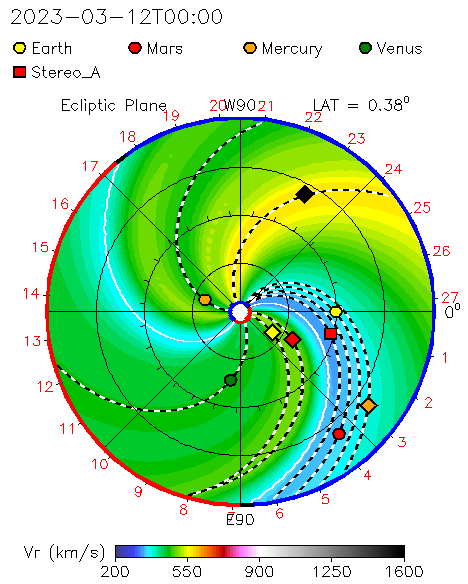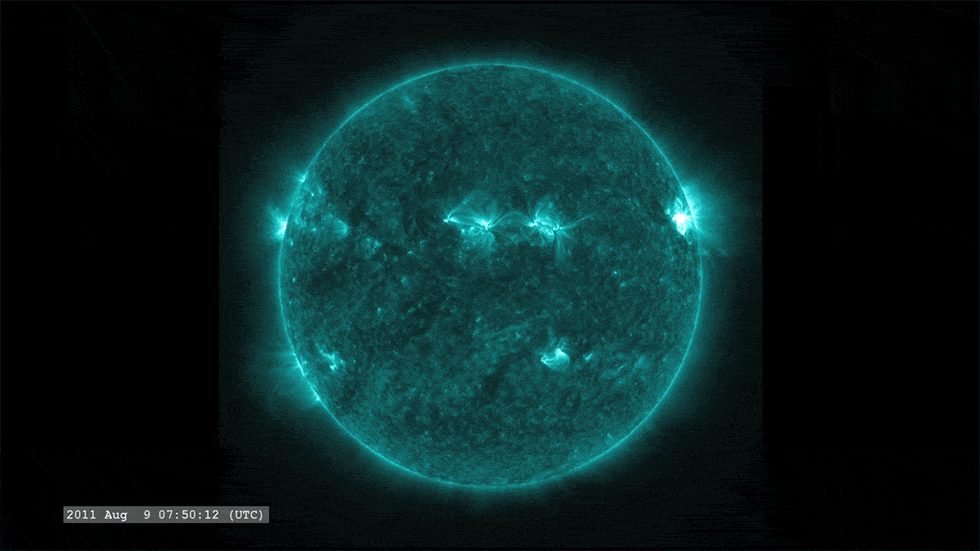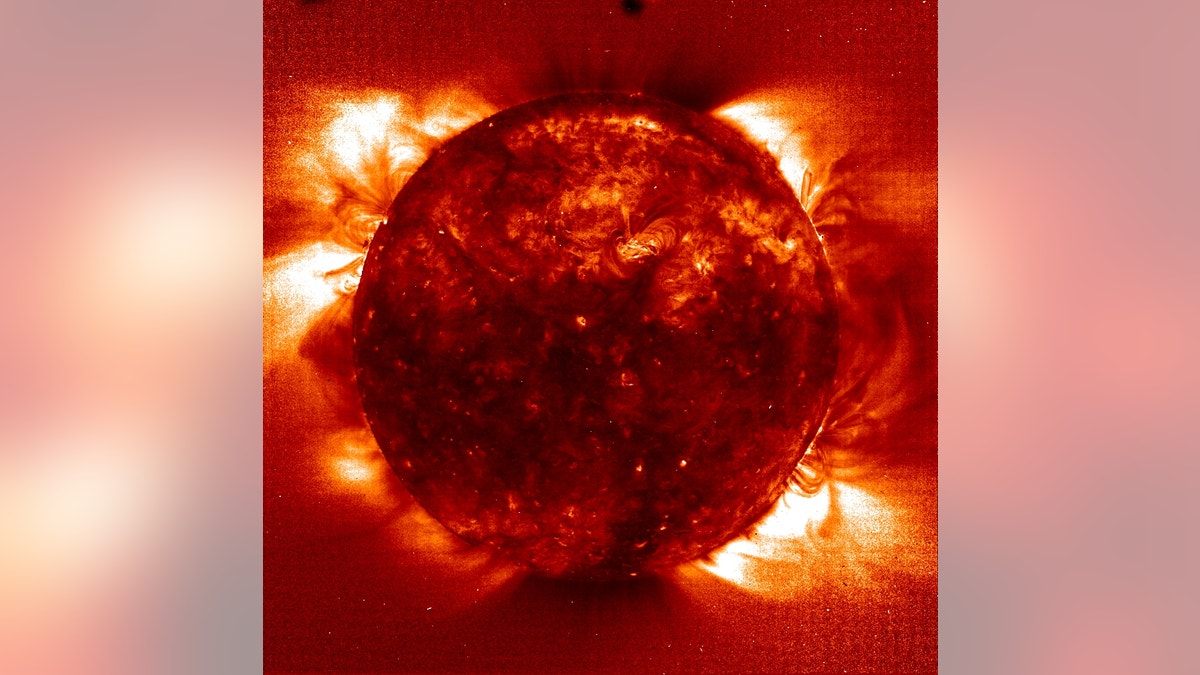An eruption on the Sun last week blasted material toward Earth, striking the third rock from the center of the solar system with debris, according to NASA.
NASA reported that a coronal mass ejection, or CME, of solar material was detected on the Sun on March 12 at about 11:30 p.m.

Simulation of coronal mass ejection, or CME, shows blast from Sun (NASA’s M2M Space Weather Office)
The eruption was on the opposite side of the Sun from Earth and is relieved to have come from a former active region called AR3234.
NEW STAR-STUDDED HUBBLE IMAGE SHOWS GLOBULAR STAR CLUSTER ABOUT 20,000 LIGHT-YEARS AWAY
Between February and early March, the active region was Earth-facing and released what NASA called, "Intense M-class flares and one powerful X-class flare."
An M-class solar flare are considered medium-size and have the potential to cause brief radio blackouts, while X-class flares are considered major events that can trigger world-wide radio blackouts.

These images show another view of the Aug. 9, 2011, X-class solar flare featured in the blue-toned 335 Angstrom images. These images were captured in light at 131 Angstroms, an extreme ultraviolet wavelength. (NASA/SDO)
NASA said its Moon to Mars Space Weather Office conducted an analysis and determined the CME was moving at 1,321 miles per second, or 2,127 kilometers per second. Because of such fast speeds, NASA classified the CME with an R, for rare.
WEBB TELESCOPE CAPTURES STUNNING IMAGE OF STAR ON CUSP OF SUPERNOVA 15K LIGHT-YEARS AWAY
NASA said it suspects the eruption struck the Parker Solar Probe "head-on," as it is approaching its 15th closest encounter with the Sun, coming within 5.3 million miles of it last Friday.
The day after the CME was pushed out of the Sun, the probe relayed a green beacon tone signifying it was in its nominal operation mode. Scientists are waiting for the next data download to learn more about the CME event, which NASA said will happen after the spacecraft’s close approach with the Sun.

An image of the sun taken in 1997 shows the hot temperatures of the corona (in lighter colors) compared to cooler temperatures of the surface of the sun (in darker colors). (SOHO (ESA $ NASA))
This CME is what NASA calls a halo because it appears to spread from the sun in a ring shape around the Sun. Depending on the observer’s position, halo CMEs occur when the solar dispersion is aligned toward or away from Earth.
"Even though the CME erupted from the opposite side of the Sun, its impacts were felt at Earth," NASA said. "As CMEs blast through space, they create a shockwave that can accelerate particles along the CME’s path to incredible speeds, much the way surfers are pushed along by an incoming ocean wave."
NASA is still analyzing the event to learn more about its far-reaching effects.


